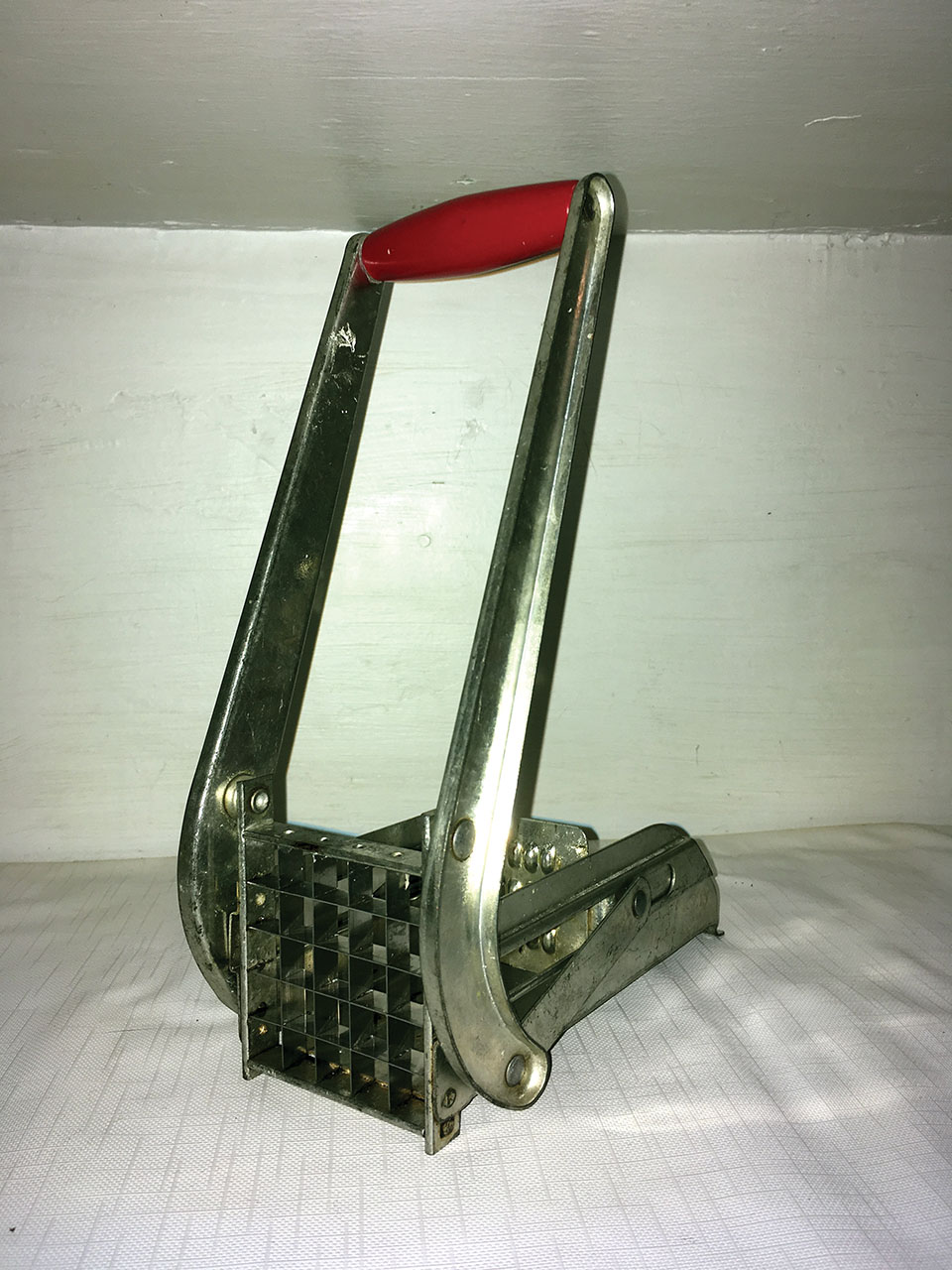Dorri Partain
Northeast News
How many chips can the potato chipper chip when the potato chipper chips potatoes?
This mid-century kitchen gadget could quickly produce 25 long slices, uniformly cut, for the busy housewife who still had time to make fresh, hot home-made fries. The model shown, the Villa Potato Chipper, was made in England (where fries are called “chips”) but imported to America to compete with the EKCO brand Miracle French Fry Cutter.
Both styles used a rachet-style handle to push a peeled potato through grid-like cutting blades to create half-inch or quarter-inch wide slices, ready to be fried- once they were rinsed, blanched, and dried first. The rounded, red wooden handle was not only stylish, but more comfortable to grip while slicing multiple potatoes.
The popularity of French Fries boomed about the same time various styles of potato cutters were made for home use and the development of frozen, ready-to-prepare French Fries. Food processor J.R. Simplot had developed dehydrated potatoes and onions during World War II, making it easier to ship those products overseas without spoilage. Following the end of the war, the company was looking for new ways to process potatoes when chemist Ray L. Dunlap devised a method to produce a frozen fry that tasted as good as fresh fries. After the potato was cut into slices, it was blanched, coated lightly in oil, then frozen. Simplot was the first company to market frozen fries to the food industries.
In 1952, Ore-Ida, the marketing company for Oregon and Idaho potato growers, began packaging frozen French Fries for the home consumer. Tator Tots were developed the following year, as they’re formed from little bits of potato cut off while slicing potatoes for fries.
The Villa Potato Chipper has a handy hole on one end so when not in use it could hang on the kitchen wall. The “Strongest & Safest” Model 200 sold for $1.49.




















